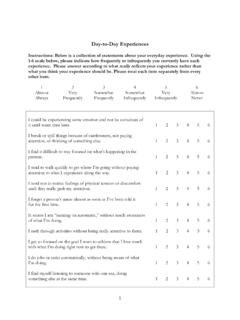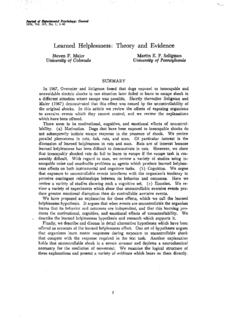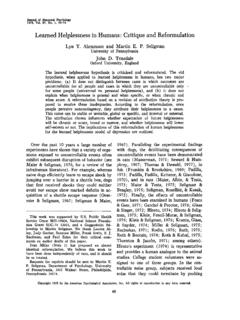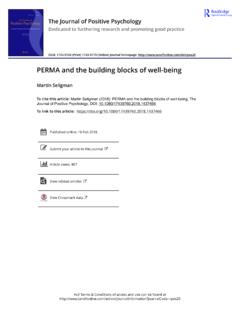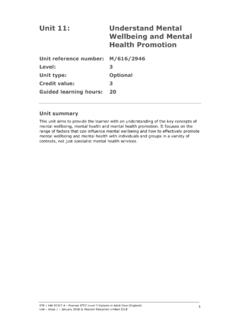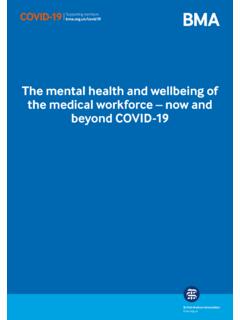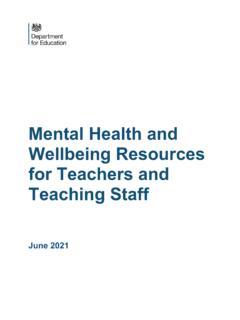Transcription of Positive education: positive psychology and classroom ...
1 Oxford Review of Education Vol. 35, No. 3, June 2009, pp. 293 311. Positive education: Positive psychology and classroom interventions Martin E. P. Seligmana*, Randal M. Ernstb, Jane Gillhamc, Karen Reivicha and Mark Linkinsd aUniversityof Pennsylvania; bLincoln (Nebraska) Public Schools; cSwarthmore College and University of Pennsylvania; dWallingford-Swarthmore (Pennsylvania) Public Schools, USA. Oxford 0305-4985. Original Taylor 302009. 35. Professor 00000 June and &Review Article Francis MartinSeligman (print)/1465-3915. Francis 2009of Education Ltd (online). Positive education is defined as education for both traditional skills and for happiness. The high prevalence worldwide of depression among young people, the small rise in life satisfaction, and the synergy between learning and Positive emotion all argue that the skills for happiness should be taught in school.
2 There is substantial evidence from well controlled studies that skills that increase resilience, Positive emotion, engagement and meaning can be taught to schoolchildren. We present the story of teaching these skills to an entire school Geelong Grammar School in Australia, and we speculate that Positive education will form the basis of a new prosperity', a politics that values both wealth and well -being. Introduction First, a quiz: In two words or less, what do you most want for your children? If you are like the hundreds of parents I've asked, you responded, Happiness', Confidence', Contentment', Balance', Good Stuff', Kindness', Health', Satisfaction', and the like. In short, you most want well -being for your children. In two words or less, what do schools teach? If you are like other parents, you responded, Achievement', Thinking Skills', Success', Conformity', Literacy', Mathematics', Discipline' and the like.
3 In short schools teach the tools of accomplishment. Notice that there is almost no overlap between the two lists. The schooling of children has, for more than a century, been about accomplish- ment, the boulevard into the world of adult work. I am all for accomplishment, success, literacy, and discipline; but imagine if schools could, without compromising *Corresponding author. University of Pennsylvania, Positive psychology Center, 3701 Market Street, Philadelphia, PA 19104, USA. Email: ISSN 0305-4985 (print)/ISSN 1465-3915 (online)/09/030293 19. 2009 Taylor & Francis DOI: 294 M. E. P. Seligman et al. either, teach both the skills of well -being and the skills of achievement. Imagine Positive Education. Should well -being be taught in school? The prevalence of depression among young people is shockingly high worldwide. Nearly 20% of youth experience an episode of clinical depression by the end of high school (Lewinsohn et al.)
4 , 1993). By some estimates depression is about ten times more common now than it was 50 years ago (Wickramaratne et al., 1989). In addi- tion, several studies suggest that the age of first onset has decreased from adulthood to adolescence (Weissman, 1987; Lewinsohn et al., 1993). Although researchers debate whether these findings reflect increases in rates of depression, increased awareness of depression, or methodological problems such as memory biases (see Costello et al., 2006), virtually all investigators are dismayed by how much depression there is now and how mostly it goes untreated (Twenge & Nolen-Hoeksema, 2002;. Costello et al., 2006). This is a paradox; particularly for those who believe that well -being comes from the environment. Almost everything is better now than it was 50 years ago: there is about three times more actual purchasing power, dwellings are much bigger, there are many more cars, and clothes are more attractive (Easterbrook, 2003).
5 Progress has not been limited to the material: there is more education, more music, and more women's rights, less racism, less pollution, fewer tyrants, more entertainment, more books, and fewer soldiers dying on the battlefield ( , Schuman et al., 1997; Environmental Protection Agency, 2006; Snyder et al., 2008). Everything is better, that is, everything except human morale. Depression and anxi- ety are rampant, and average individual and average national happiness, which has been measured competently for half a century, has not remotely kept up with improvement in the world. Happiness has gone up only spottily, if at all. The average Dane, Italian and Mexican is somewhat more satisfied with life than 50 years ago, but the average American, Japanese or Australian is no more satisfied with life than he was 50 years ago, and the average Briton or German is less satisfied (Inglehart et al.)
6 , 2007). Why this is is a matter of contention. It is certainly not biological or genetic. Nor is it ecological (the Old Order Amish who live 30 miles down the road from me in Philadelphia have only one-tenth our rate of depression, even though they breathe the same air, drink the same water, and make much of the food we eat (Egeland &. Hofstetter, 1983). It has something to do with modernity and perhaps with what we mistakenly call prosperity'. Not only is there widespread depression and spotty increases in happiness, two good reasons that well -being should be taught if it could be taught but there is a third good reason. More well -being is synergistic with better learning. Increases in well - being are likely to produce increases in learning, the traditional goal of education. Positive mood produces broader attention (Fredrickson, 1998; Bolte et al., 2003;. Fredrickson & Branigan, 2005; Rowe et al.)
7 , 2007), more creative thinking (Isen et al., Positive education 295. 1987; Estrada et al., 1994), and more holistic thinking (Isen et al., 1991; Kuhl, 1983, 2000), in contrast to negative mood which produces narrower attention (Bolte et al., 2003), more critical thinking, and more analytic thinking (Kuhl, 1983, 2000). Both ways of thinking are important, but schools emphasise critical, rather than creative thinking, and the negative mood so often found in the classroom facilitates only critical thinking. We conclude that, were it possible, well -being should be taught in school on three grounds: as an antidote to depression, as a vehicle for increasing life satisfaction, and as an aid to better learning and more creative thinking. Because most young people attend school, schools provide the opportunity to reach them and enhance their well -being on a wide scale. Schools are an excellent location for well -being initiatives for several reasons.
8 Children and adolescents spend much of their waking time in school. For example, in the United States, 6 17 year-olds typically spend 30 35 hours per week in school (Hofferth & Sandberg, 2001). Thus, students' day-to-day interactions and experiences with peers, teachers and coaches are integral to their well -being and are important targets for well -being programmes. In addition, most parents and educa- tors see the promotion of well -being and character as an important, if not central, aspect of schooling (Cohen, 2006). Surveys of American parents over the past 30. years indicate that their most important goal for education was to prepare children to become responsible citizens (Cohen, 2006). Most schools are already engaged in this work to some degree. In recent years, there has been increasing recognition of this promise. American schools are a major provider of mental health services (American Academy of Pediatrics, 2004; Foster et al.)
9 , 2005). Schools also have enormous (largely untapped) potential for prevention and well -being initiatives (Pfeiffer & Reddy, 1998; American Academy of Pediatrics, 2004; Weist, 2005). In the USA, most states now mandate or encourage character education, and many have standards related to social and emotional learning (Cohen, 2006; CASEL, 2009). Britain's education policy also includes the promotion of moral or character development (Arthur, 2005). Despite the potential, there is considerable debate about school-based well -being initiatives. Many parents are concerned that programmes will teach values that are determined by educators or politicians and that bear little resemblance to the values they hope to instil in their children (Arthur, 2005). Researchers are often concerned about the lack of empirical evidence for most programmes (Spence & Shortt, 2007). Parents, educators and politicians are often concerned that programmes will waste money or (worse) lower students' achievement by diverting time and money away from academic subjects (Benninga et al.
10 , 2006; Financial Times, 2007). We argue below that well -being programmes can: 1) promote skills and strengths that are valued by most, and perhaps all, parents; 2) produce measurable improvements in students' well -being and behaviour; and 3) facilitate students' engagement in learning and achievement. What follows is the framework that guides us when we teach well -being in schools. 296 M. E. P. Seligman et al. What is happiness? Happiness' is too worn and too weary a term to be of much scientific use, and the discipline of Positive psychology divides it into three very different realms, each of which is measurable and, most importantly, each of which is skill-based and can be taught (Seligman, 2002). The first is hedonic: Positive emotion (joy, love, contentment, pleasure etc.). A life led around having as much of this good stuff as possible, is the Pleasant Life'.


